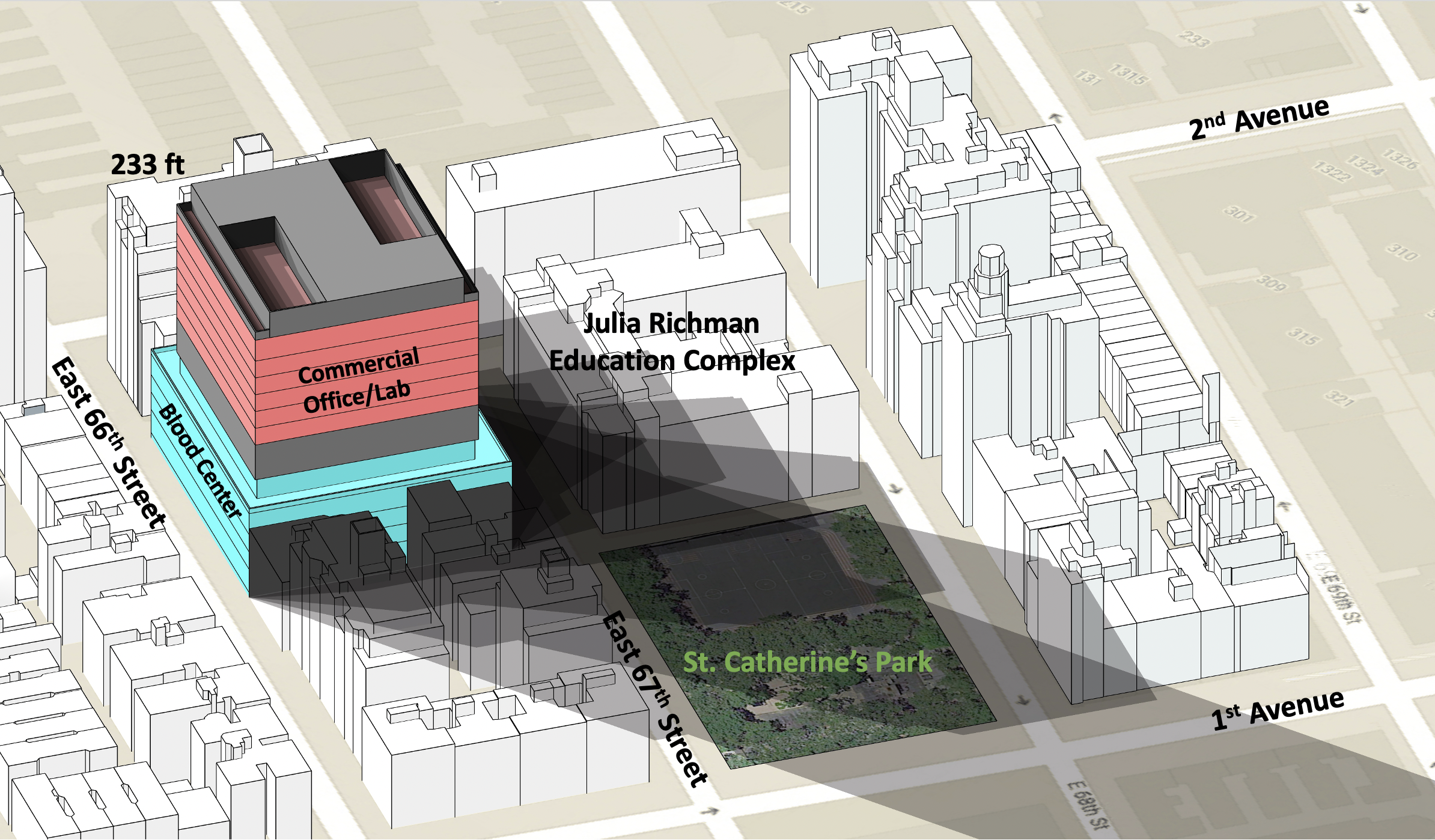Today, the City Planning Commission approved the modifications to the Blood Center/Longfellow commercial tower plan, paving the way for the full City Council vote scheduled for Tuesday, November 23rd. A protest filed by neighbors using a provision in the City Charter raises the vote threshold from a simple majority to a super majority of three-quarters of Council Members in order to pass the project.
Council Member Ben Kallos authored the piece below about the real issues at stake in the fight over the Longfellow development at 310 East 67th Street. Should this project win approval over the local council member's opposition, communities and Council Members across the city will lose the most valuable tool in the ULURP toolbox. Every neighborhood needs a meaningful seat at the table, and member deference is the only bit of leverage regular New Yorkers have in advocating for their communities against powerful developers and lobbyists.
FRIENDS urges the Council to recognize the importance of representing their communities' interests and vote to respect member deference. It's what you were elected to do. Read the Council Member's Op-Ed on the Daily News below and here.

A model of the revised 233' project shows that the commercial portion of the building, in red, still towers over the Julia Richman Education Complex, St. Catherine's Park, and the consistent human-scale context along East 67th and East 66th Streets, setting a troubling precedent for development in residential areas citywide.
The fight over the new Blood Center building was never about blood. It has been about two other issues: How high should the center’s for-profit partner Longfellow Development’s commercial offices tower over a residential neighborhood, and how should the City Council handle development deals in the years to come?
Last week, despite us not yet having reached a compromise I could support, the Council’s Land Use Committee voted to approve a modified version of the project, which would be built in the district I represent. To pave the way for this vote, which bucked the usual custom of deferring to the local member on development projects, much was done to paint me as unreasonable and the Blood Center as at risk.
Untrue. The Blood Center testified to the Council that closing this location for years of construction would have no impact on its ability to distribute blood to New York. That’s because the Blood Center competes with the Red Cross across 17 states and is only permitted by the FDA to test and distribute from its complexes in Long Island City and on Long Island — not from its Upper East Side building.
In fact, the final changes I was asking for on behalf of my constituents, which would have gotten us to a deal, had nothing to do with the Blood Center at all. The Blood Center will only be getting one-third of the new building, while two-thirds will go to commercial life-sciences offices.
Those offices are being propped up by a 30-foot mechanical gap and ultra-luxury, double-height ceiling heights. Perhaps that’s because Longfellow’s trademark office service, Elevate, boasts of offering tenants “curated amenities” from spas and dry cleaning to yoga and free-flowing beer and wine, because in their words, “No one goes to work just to work anymore…”
The gap we could not cross in our negotiations was how high these money-making spaces would rise, not how many floors or how large the floors would be — all of that would be unchanged. If we were allowing this development to be three times as high as the zoning allowed, the least they could do was to move 30 feet of mechanical equipment from the middle of the building to the roof and lower their ceiling heights from 18 feet to a more standard but still tall 14 feet.
These commonsense changes would have lessened the building’s impact on the Julia Richman Education Complex and St. Catherine’s Park across the street. It would still have allowed them to build far above the 75 feet in height they could build as of right.
They rejected these changes because Longfellow wanted more valuable commercial property, and because special interests wanted to prove a point to the next Council. I’ve approved multiple rezonings, including a larger life sciences project at Rockefeller University. Inevitably, there are NIMBY voices who oppose new developments, but between the YIMBYs and the NIMBYs, there is often an opportunity for a good project. When the project is in my district, my job in that process is to find the balance.
I represent 170,000 New Yorkers of all ages, races and religions, who live and work in the neighborhood, as well as many of the city’s life science institutions that employ and treat New Yorkers. I also represent public school students from all five boroughs learning at the Julia Richman Education Complex, cancer patients at Memorial Sloan Kettering, and people who work at local small businesses.
Member deference gives the local member the ability to represent those interests with the weight of the full Council behind them, and find a win-win. In the alternative, monied real estate interests can undermine the negotiator on the other side of the table by using their resources to win over members with little stake in a project outside their neighborhood.
In this case, pro-real estate interests wanted to send a message to the next Council that they no longer have the power to negotiate on behalf of their constituents.
I am grateful to the community members and colleagues who stood by me and helped us get the building down from 334 feet to 233 feet. But I remain frustrated that we did not go the additional reasonable steps. This modified proposal will come before the full Council for a vote on Nov. 23. If it is rejected, I am committed to working with the Blood Center on a new building.
Approval from the full Council, on the other hand, would create a blueprint for deep-pocketed developers to get what they want. Don’t be fooled into thinking this will work for affordable housing developers, faith-based groups or non-profit providers. Before the vote, ask your councilmember to vote to respect member deference so your voice will still be heard on the next project that will come to your community.
Written by Council Member Ben Kallos. Published at the Daily News.

